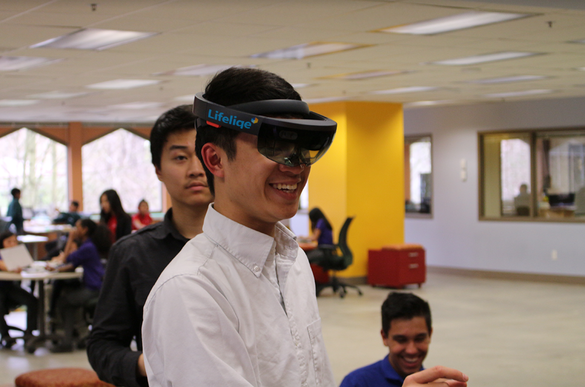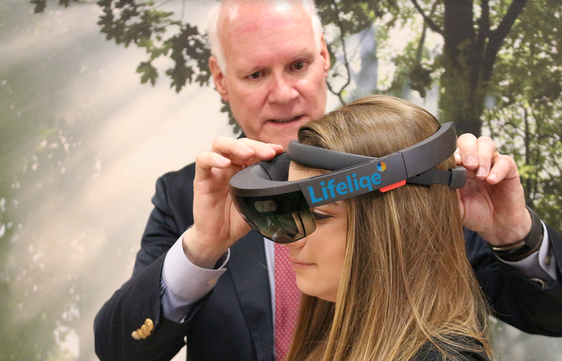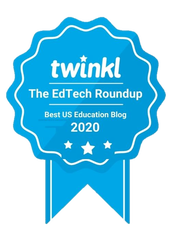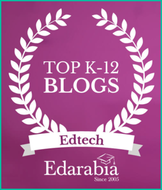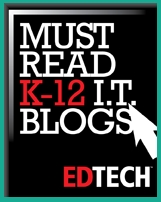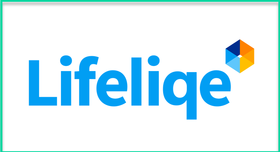
We have been in good contact with Microsoft ever since I started content company - Corinth. We managed to get into the finals of Microsoft’s “Partner Of The Year” awards twice in consecutive years, which is something no-one else ever managed. I don’t want to sound like a hipster but we were also looking into AR before it was cool, so good match there as well.
We brought the good relationship into Lifeliqe (pronounced as life-like) as well, which turned out to be a great step regarding VR too, since the majority of high-end devices all run on Windows. When the opportunity to talk about HoloLens emerged we were super-excited, because the gadget is just unique. For what it’s capable of, there’s an incredible quality - display, positional tracking, all that. And it’s completely un-tethered, which is also a huge benefit.
After HTC Vive, you started cooperation with another major immersive device manufacturer. What does that mean for Lifeliqe?
We are blessed to have such a unique position in VR, AR, MR, etc. as content platform in non-gaming space. The interest we are constantly raising among OEM’s shows us that our content is valuable not just to the end users but also serves as a valuable medium to enrich and light-up the hardware platforms. We are clearly helping both Vive and HoloLens with adoption and I guess pretty soon we will be able to announce more HW platforms choosing us as go-to platform. I hope with increased adoption Lifeliqe will have more new publishers.
Having content deployed on both HTC Vive and HoloLens, why do you care so much about these “gadgets” for K-12, when the segment is struggling for money?
From short term perspective counting on K-12 Education is a clear suicide. From a startup perspective it seems very similar. But we realised that almost 100% of developed world’s population went through K-12 education, it’s a common denominator for majority of people on this planet. What we learn in K-12 grades is the base we use onwards for our whole life. From this perspective it’s very interesting, because it allows us to understand how people learn all around the globe and only that way we are able to track how these devices can help in education everywhere.
K-12 education puts everyone on roughly the same startline, but there are differences. Some students are different, they show more interest, energy and drive. They are going for the path of job creators, managers and chief officers. It is interesting to see the patterns of learning in these students. And using these visual devices gadgets, we can excite the rest and fuel them with the same vigor others have.
Why do you believe so much in visual learning?
The theories which segment people to visual, auditory or kinesthetic learners are considered obsolete by some but I can still tell you that every time I ask people on different occasions, two thirds tell me they prefer visual stimulus. We did our own small research that confirmed it as well. There was roughly twenty-five percent considering themselves mixed, but when asked about the dominant way of stimuli, they chose visual in majority of cases.
With no regard to the theory, I can definitely say I’m a visual learner, it just works best for me. And virtual reality or mixed reality devices undoubtedly bear greater learning potential than books or even displays can offer.
Is VR and AR just about the visual learning or is there more to it?
We figured that there’s a strong link between attention and visual stimulation. We are currently living in a world where half of the Western hemisphere is suffering from ADHD epidemic. That’s of course a figure of speech, but there really is a big problem with attention disorders, mainly with the young generation. And it’s understandable, there’s so much stimuli they just can’t cope with it.
People want to hear surprising and magical stories. We get fascinated by them and if we’re given such content, we pay much more attention. And I believe VR and AR devices are perfect for telling these stories.
Both of the platforms which are predicted to be the future of consuming content have Lifeliqe available on it. Who else is there who’s progressing that fast in VR and AR?
We are excited that thanks to our close cooperation with OEM’s we are able to pilot both VR and AR. These technologies are complementary and both have a place in learning process and we think that a combination of use of both of these devices would be very effective in learning. We are glad that we can try out these non-competing devices in an actual classroom and we are also thankful to have such good relationships with hardware OEM’s on different hardware platforms.
The most important factor from to bottom to the top is always the student - he’s the one to whom the teachers are passing the content. And the teacher needs the content to be curriculum aligned as Lifeliqe is. That’s why we are so delighted to have Michael Carter, a former advisor to Steve Jobs, to create 3 interactive books for Life Science courses that are already available on Lifeliqe. That’s the basic stuff and now we need to collect more data from the market.
Talking about data again, what gives you the confidence that VR and AR is better for education than a regular book?
You see, the 3D is around for a while and there are studies that confirm its positive effects on learning, for instance the one conducted by Dr. Bamford. We also started cooperating with Associate Professor Richard Lamb from University at Buffalo and we are really excited with it, to study exactly the effects of VR on learning Sciences, measuring the retention of knowledge and comparing them to traditional means of learning. The data should be ready in Q1 of 2017 and I’m sure we’ll not be the the only ones interested. It’s gonna be an extraordinary document - as far as we know there’s been no other study recently conducted of this scale and depth and using the latest VR devices.
Looking forward to that. What else is there for Lifeliqe in the 2017?
We are definitely very much interested in web platforms for content, that’s gonna be a big topic for us in the 2017. For now, we feel comfortable on native platforms, but we are still keeping our heads up for potential hardware platforms and partners.

